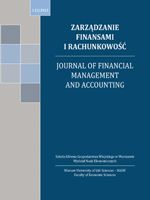Main Article Content
Article Details
ANDERSON K. 2009: Distortions to Agricultural Incentives: A Global Perspective, 1955-2007. Washington DC.: Palgrave Macmillan and World Bank. (Crossref)
BABCOCK B., FRAZER R., and LEKAKIS J. 2003: Risk Management and the Environment: Agriculture in Perspective. Dordrech/Boston/London: Kluwer Academic Publisher. (Crossref)
BLANDFORD D. 1983: Instability in world grain market. J. of Agricultural Economics 34 (3), 375-395. (Crossref)
FAO. (2014, January 22). FAO STAT. Retrieved from FAO STAT Production: http://faostat.fao.org/
GOYCHUK K., MEYERS W. 2013: Black Sea and World Wheat Market Price Integration Analysis. Canadian Journal of Agricultural Economics, 1-17. (Crossref)
KOESTER U., SCHUMANN C., LISSITSA A. 2010: The Agricultural Knowledge and Information System in Ukraine - Call for Reforms. Kyiv: German-Ukrainian Policy Dialogue in Agriculture Institute for Economic Research and Policy Consulting Policy Paper Series [AgPP no 30].
NELGEN S., ANDERSON K. 2012: Trade Barrier Volatility and Agricultural Price Stabilization. World Development 40 (1), 36-48. (Crossref)
SHARPLES J., MARTINES S. 1994: The Role of Stocks in World Grain Market Stability. Washington DC.: USDA ERS Forin Agricultural Economic report № 248.
SKRYPNYK A., ZINCHUK T. 2012: The parity principle determining export quotas for wheat. Economy of Ukraine (2), 26-38.
SKRYPNYK A., BUKIN E., GLAZUNOVA O. 2013: Structural Ukrainian Agrarian Changes: Numerical Evaluation. Information Systems in Management 1, 282-293.
USDA. 2009: GAIN Report RS9022, Russian Federation, Grain and Feed, Russia's Federal United Grain Company Created. Washington DC: USDA. Retrieved April 24, 2012, from http://www.fas.usda.gov/gainfiles/200903/146347621.pdf
USDA. 2010: Former Soviet Union Region to Play Larger Role in Meeting World Wheat Needs. Washington DC.: USDA. Retrieved April 23, 2012, from http://www.ers.usda.gov/AmberWaves/June10/Features/FSUWheat.htm
VALENZUELA E., ANDERSON K. 2008: Global Estimates of Distortions to Agricultural Incentives, 1955 to 2007. World Bank. Retrieved from http://www.worldbank.org/agdistortions (Crossref)
WORLD BANK. 2009: A State Trading Enterprise for Grains in Russia? World Bank.
ZSOMBOR P., PEREKHOZHUK O., TEUBER R., GLAUBEN T. 2013: Are Russian Wheat Exporters Able to Price Discriminate? Empirical Evidence from the Last Decade. Journal of Agricultural Economics 64 (1), 177-196. (Crossref)




